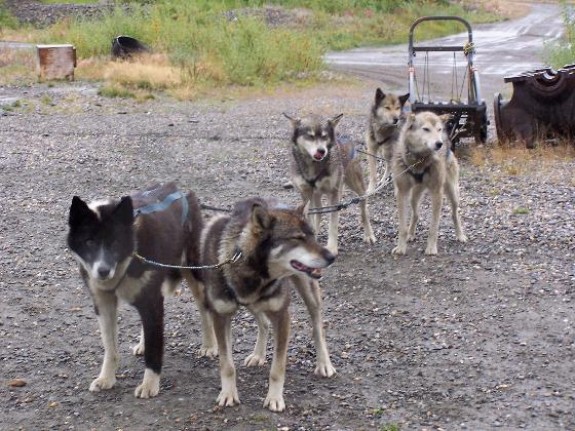The Iditarod Is Being Threatened by Warm Temperatures
A lack of snow is affecting the annual Iditarod sled dog race

Sled dogs training in the summer in Nome, Alaska, the city that marks the finish line of the long-distance race. Photo: J. Stephen Conn
There is less than a month to go until the annual Iditarod sled dog race—a 975 mile endurance race through the snow—is set to kick off from Willow, Alaska. Or, at least, that is the plan—unless persistently warm water ruins it, says Mary Pilon for The New York Times.
Instead of subzero conditions, which are ideal for the sport, temperatures have been in the 30s and 40s.
Rain has been falling in place of snow, and the annual snowfall has been just 29 percent of what it was last year. Though such a drastic year-over-year change is down to the weather, scientists are attributing a long-term drop in snowfall to climate change.
The warm spell has thrown off preparations for the Iditarod, with many of the qualifying events for those seeking to earn a spot in the race being “postponed, rerouted or canceled because of a lack of snow.”
Pilon says that the warm conditions are even threatening the health of the Arctic-ready dogs:
Most sled dogs run best at temperatures ranging from 20 degrees below zero to zero degrees. When temperatures are higher, dogs risk overheating and sustaining injuries from stepping on bramble. (Some mushers are using bootees as a protective measure for dogs’ paws.)
She says that some dog breeders are trying to raise dogs with thinner coats who would be able to better deal with the warmer conditions.
The warming, though affecting the run-up to the race, should not hurt the actual Iditarod too much, says the Associated Press last month. Though, what actually happens on race day will all come down to the weather.
More from Smithsonian.com:
/https://tf-cmsv2-smithsonianmag-media.s3.amazonaws.com/accounts/headshot/smartnews-colin-schultz-240.jpg)
/https://tf-cmsv2-smithsonianmag-media.s3.amazonaws.com/accounts/headshot/smartnews-colin-schultz-240.jpg)